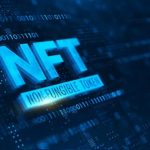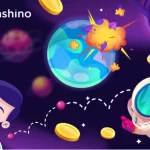The world of non-fungible tokens (NFTs) has been rapidly evolving, with various blockchain platforms vying for supremacy in the market. In recent times, Ethereum, which has been the dominant player in the NFT space, has been facing challenges due to scalability issues and high gas fees. As a result, NFT sales on other blockchain platforms such as Polygon, Cardano, and Solana have been on the rise. In this article, we will explore the recent trends in NFT sales on these alternative platforms and what it means for the future of NFTs.
NFT Sales on Polygon Soar Amidst Ethereum’s Challenges
The Rise of Polygon, Cardano, and Solana in NFT Sales
In recent months, there has been a significant increase in NFT sales on blockchain platforms like Polygon, Cardano, and Solana. These platforms have gained popularity due to their focus on scalability, low transaction fees, and interoperability, which have addressed some of the challenges faced by Ethereum. NFT artists and collectors are now looking to explore alternative options beyond Ethereum to buy, sell, and trade digital assets.
In the last 30D @0xPolygon NFT market had 2 days with volume above $1M.@y00tsNFT was the volume leader both on @opensea and @MagicEden with an overall volume of ~$6,5M
— sealaunch.xyz (@SeaLaunch_) April 21, 2023
Comparing to the volume total in the 30D, that’s 22% of OpenSea volume and 47% of MagicEden volume pic.twitter.com/VPRrh6Up1y
Cardano and Solana NFT Sales Surge as Ethereum Slumps
Polygon, also known as MATIC, has emerged as a leading player in the NFT space, offering faster and cheaper transactions compared to Ethereum. Its scalability and compatibility with Ethereum’s blockchain have made it an attractive choice for artists and collectors. Similarly, Cardano and Solana have also gained traction due to their advanced technology and promising features, attracting artists and collectors who are seeking alternatives to Ethereum’s limitations.
The Impact on the Future of NFTs
The increasing NFT sales on Polygon, Cardano, and Solana are indicative of the growing demand for alternative blockchain platforms in the NFT market. As Ethereum faces scalability and gas fee challenges, artists and collectors are exploring other options that offer faster, cheaper, and more efficient transactions. This trend could have significant implications for the future of NFTs, as it may diversify the market and encourage competition among blockchain platforms. It could also lead to increased innovation in the NFT space, with platforms constantly improving their technology to attract more users and offer better user experiences.
What the Rise of Alternative Platforms Means for NFTs
The NFT market is rapidly evolving, with Polygon, Cardano, and Solana emerging as promising alternatives to Ethereum. The increasing NFT sales on these platforms indicate the growing demand for scalability, low transaction fees, and interoperability in the NFT space. While Ethereum continues to face challenges, artists and collectors are exploring other options to buy, sell, and trade digital assets. The rise of alternative platforms could have significant implications for the future of NFTs, leading to increased competition, innovation, and diversification in the market.
NFT sales on alternative blockchain platforms like Polygon, Cardano, and Solana are rising due to their focus on scalability, lower transaction fees, and interoperability, which address some of the challenges faced by Ethereum, such as high gas fees and scalability issues. This has attracted artists and collectors to explore these alternative options for buying, selling, and trading NFTs.
Polygon, Cardano, and Solana offer advantages such as faster and cheaper transactions, improved scalability, and interoperability with Ethereum’s blockchain, making them attractive options for NFT artists and collectors. These platforms provide alternatives to Ethereum’s limitations and offer a more efficient and cost-effective way to transact NFTs.
The rising NFT sales on Polygon, Cardano, and Solana could have significant implications for the future of NFTs. It may lead to increased competition among blockchain platforms, driving innovation and diversification in the NFT market. It could also result in artists and collectors exploring multiple platforms for buying, selling, and trading NFTs, creating a more diverse and dynamic NFT ecosystem.
Yes, Ethereum’s challenges with scalability and gas fees have impacted NFT artists and collectors. High gas fees on Ethereum can make NFT transactions expensive, limiting access for artists and collectors with smaller budgets. Scalability issues can also result in slower transaction times, affecting the overall user experience. As a result, artists and collectors are exploring alternative platforms like Polygon, Cardano, and Solana for more cost-effective and efficient NFT transactions.
Using alternative blockchain platforms like Polygon, Cardano, and Solana for NFT sales can offer benefits such as faster transactions, lower transaction fees, improved scalability, and interoperability with Ethereum’s blockchain. These benefits can result in a better user experience for NFT artists and collectors, enabling them to transact NFTs more efficiently and cost-effectively. Additionally, exploring alternative platforms can provide diversification in the NFT market and promote competition, leading to further innovation in the space.






























